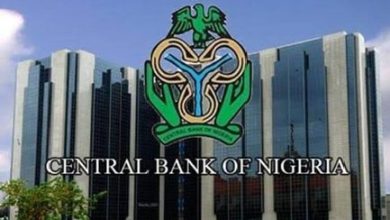Eight Nigerian Banks Record N156bn in Loan Losses Amid Economic Headwinds
Eight Nigerian banks booked N156 billion in credit losses in Q1, reflecting economic stress and rising defaults.
Despite the heavy impairments, some lenders still posted profit growth through cost control and recoveries.
Eight Nigerian banks posted a combined N156 billion in impairment charges on credit and financial assets during the first quarter of 2025, reflecting ongoing challenges in the country’s economic environment. This figure emerged from an analysis of their unaudited Q1 financial statements filed with the Nigerian Exchange Limited.
Impairment charges also known as credit or loan losses represent funds set aside by banks to cover potential defaults on loans or a drop in the value of financial assets. These losses underline the pressure banks face from high inflation, weakening naira, and limited business and consumer liquidity.
A breakdown by bank shows varied results, with some financial institutions managing to reduce their impairment losses, while others faced sharp increases.
Zenith Bank recorded the highest impairment charge at N49.38 billion, a decline from N55.97 billion in Q1 2024 an 11.8% drop. This reduction likely reflects improved loan performance or better recovery efforts. Of this amount, N35.95bn came from loans and advances, with the rest from investment securities, treasury bills, and other financial assets. Despite the hefty provision, Zenith grew its profit after tax by 20.7%, rising to N311.83bn.
FBN Holdings followed with N37.25 billion in impairment losses, down 11.2% from N41.93 billion in the previous year. Most of the provisions N41.23 billion were for customer loans. However, some relief came from recoveries and reversals. Despite this, its profit declined from N208.11bn to N171.10bn.
Access Holdings reported a net impairment of N21.77 billion, marginally down from N22.79 billion a year earlier. The drop was aided by fewer charges on investment securities and pledged assets. Profit after tax rose by 14.7% to N182.75 billion, helped by stronger income and cost controls.
Guaranty Trust Holding Company (GTCO) posted N13.42 billion in impairment losses, a slight 0.5% drop from the N13.49 billion recorded in Q1 2024. Most of the loss stemmed from Stage 3 loans those considered credit-impaired although some was offset by reversals in other categories. Still, GTCO saw a sharp 43.6% decline in profit, falling to N258.03 billion.
UBA stood out with a 332.2% increase in impairment charges, jumping from N3.28 billion to N14.18 billion. This rise was due to N11.12 billion in credit losses on loans and additional provisions for other assets. Nonetheless, the bank posted a 33.1% growth in after-tax profit, which climbed to N189.84 billion.
FCMB recorded a notable drop in impairments, falling by 59.9% to N9.52 billion from N23.71 billion in 2024. This was largely due to recoveries worth N4.11 billion. Its profit after tax rose to N32.23 billion.
Fidelity Bank saw a sharp 285.8% surge in impairment charges to N8.66 billion, up from N2.25 billion a year earlier. The report linked the figure to both credit losses and depreciation, indicating a wider asset write-down.
Wema Bank reported N1.82 billion in provisions, a 64.7% increase from N1.10 billion in 2024. Most of the losses came from loans and advances (N1.04 billion), alongside investment securities and other financial assets. Recoveries helped soften the total impact.
Overall, the N156 billion total represents a 5.2% decline compared to N164.53 billion recorded in Q1 2024, according to revised data. However, individual bank performance varied, showing how differently banks are managing credit risks in today’s volatile economy.
Charles Sanni, CEO of Cowry Treasurers Limited, said in an interview that how a bank handles impairment charges often reveals its risk appetite and internal monitoring strength.
“Some banks are deliberately aggressive in writing off non-performing loans. That’s what I call ‘biting the bullet,’” he explained. “It reflects a strategy to clean up books quickly, even if it temporarily hurts profitability.”
According to Sanni, lower non-performing loan (NPL) ratios often signal tighter loan monitoring and healthier credit practices. He noted that since interest rates began rising in 2024, well-managed banks have become more cautious, shifting focus toward sectors less exposed to rate shocks.
“Proactive banks are paying close attention to borrower leverage levels,” he said. “Those highly geared are more vulnerable when inflation and interest rates rise.”
He added that early loan recovery efforts can reduce impairment charges, but each bank’s outcome ultimately depends on its unique strategy. Some institutions securitize risky loans or deploy hedging tools, while others carry non-performing loans longer to protect short-term income, which he warns is risky.
On broader trends, Sanni noted that rising loan volumes are helping to support bank earnings, especially in capital-intensive sectors like manufacturing and oil and gas.
“Loan demand has gone up partly due to inflation. Sectors needing more capital to keep operating like oil and manufacturing are fueling this growth. As long as inflation remains high, bank earnings in these areas may continue rising,” he concluded.



